Late Summer Viewing, part 2
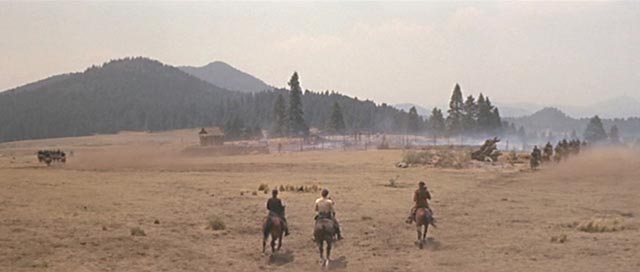
I’ve mentioned the boutique label Twilight Time before; they continue to release an interestingly eclectic series of limited edition Blu-rays (3000 copies of each title), with their specialty being a focus on the films’ soundtracks (each title includes a separate music track), not so surprising since they’re available exclusively from Screen Archives Entertainment, a site which is also host to Film Score Monthly. Recently, however, they’ve released a few titles with additional extras which have increased their desirability.
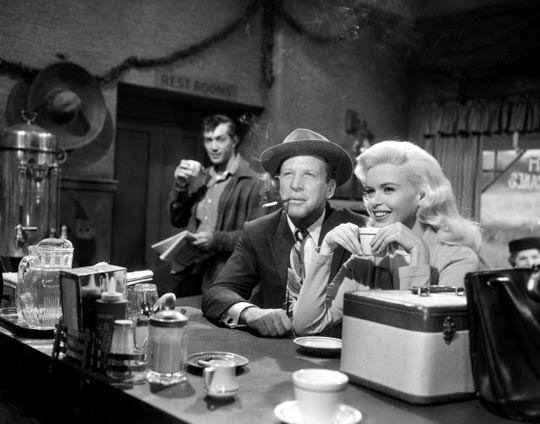
Victor Vicas’ charming curiosity John Steinbeck’s The Wayward Bus (1957) has an unexpected commentary track by noir specialists Alain Silver and James Ursini; and Ken Annakin’s still-charming Those Magnificent Men In Their Flying Machines has a commentary by the late director (I suspect it’s the one he recorded for the old laserdisk edition); but disappointingly their edition of Brian DePalma’s The Fury only has the isolated score (particularly disappointing since Arrow Films’ upcoming region B Blu-ray is packed with extras).
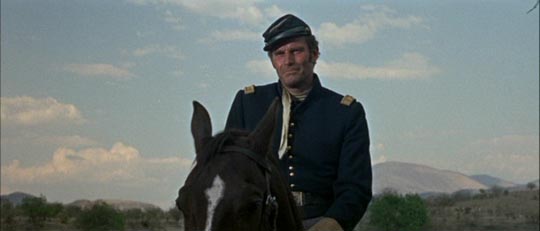
Major Dundee (1965): Sam Peckinpah’s first bid to break the western out of its traditional constraints is legendary as a film crippled by an unimaginative producer, but the story is more complicated than that (Glenn Erickson has some interesting background on the production). Twilight Time has put together a 2-disk package which includes both the original theatrical version and the “extended version” from 2005 which reinstated about 14 of the roughly 40 minutes cut by the producer. When I first saw the theatrical version years ago on laserdisk, I got the impression that most of the cuts had been made in the second half as the film starts off coherently but eventually becomes sketchy and narratively confusing. But apparently there were also extensive cuts from the opening, and much of the later incoherence arose from the fact that Peckinpah embarked on the production without a finished script. The results in both currently available versions are a hugely ambitious but messy collection of big set-piece sequences which never cohere into a satisfying narrative. Peckinpah was feeling his way towards that larger-than-life worldview combining cynicism and romance which exploded in his next feature, The Wild Bunch (1969). The extended cut includes a group commentary by four film historians, while the theatrical disk includes a collection of outtakes and deleted/incomplete scenes, and both disks have isolated score tracks – the original by Daniele Amfitheatrof which smothers the film with bombast and the newly commissioned Christopher Caliendo score which allows the extended version to “breathe”.
*
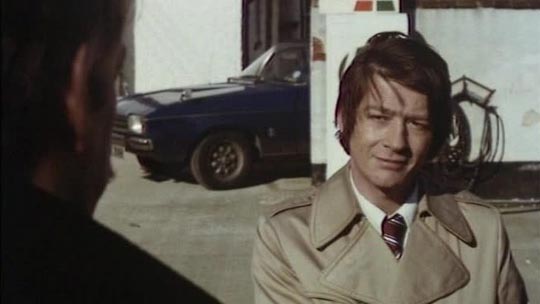
The Disappearance (1977): Stuart Cooper’s self-consciously “arty” thriller is one of the most interesting products of Canada’s tax shelter production boom of the ’70s, and Twilight Time’s disk offers an interesting perspective on what can happen when a serious filmmaker runs up against the crass interests of commercial distributors. Cooper is an interesting figure; born in Hoboken and relocated to England, after a couple of short documentaries, his first feature was the wildly imaginative Little Malcolm and His Struggle Against the Eunuchs (1974), followed by Overlord (1975), a mediocre drama about D-Day preparations which is packed with remarkable documentary footage from the Imperial War Museum. Two years later, he made The Disappearance, a brooding story about a hit-man who works for a shadowy organization called “the office”. Returning from a job, Jay Mallory (Donald Sutherland) finds that his wife has gone; while his employers urge him to take on a new assignment, he goes over his troubled marriage in a series of flashbacks which gradually seem to tie her disappearance to this new hit which is scheduled to take place in England. The non-linear structure and the gloomy tone (much of the film was shot in Montreal in winter, particularly the old Expo 67 site, a setting which Robert Altman pushed to apocalyptic extremes in Quintet [1979]) transform the thriller into a brooding meditation on marriage and the destructive power of distrust in a relationship.
What happened after Cooper delivered his cut is a filmmaker’s worst nightmare; the U.S. distributor, World Northal, took the film away from him and re-cut it to make it linear (i.e. less arty and more commercial), destroying the carefully constructed narrative and along with it the essential themes of the film. In addition, the distributor replaced the classical score built around the works of Ravel with a generic ’70s synth track. And so the film sank out of sight for decades. But somehow a different version has surfaced, not Cooper’s original cut (it’s 10 minutes shorter), but restoring the intricate structure and the music. Cooper doesn’t know where this came from, though Julie Kirgo’s liner notes suggest that producer and supporting actor in the film David Hemmings might have been responsible. The disk presents a pristine HD transfer of this mystery cut and includes an SD open-matte transfer of Cooper’s original 101-minute cut, along with a brief interview with Cooper covering how the film came to be made (and destroyed) and, most interestingly, the opening 15 minutes of the distributor’s cut (I wish they’d included the whole thing because, while it was possible to make a coherent if dull linear opening, it’s hard to imagine how the whole story could have been made to play this way).
*

The Driver (1978): Walter Hill’s second feature isn’t as arty as Cooper’s film, but The Driver is his homage to the laconic crime movies of Jean-Pierre Melville and the anti-performance style of Robert Bresson. Hill succeeds remarkably well in the very difficult task of creating a purely archetypal film – the characters are known only as The Driver (Ryan O’Neal), The Detective (Bruce Dern) and The Player (Isabelle Adjani) – in which we get no backstory, no explanations, no emotions and no motivation, simply character defined solely through action. The Driver is a cool professional, hiring out for heists; The Detective is determined to capture him even if it means breaking the law to do it; and The Player helps him simply because she enjoys the game. The film alternates between spectacular car chase sequences and often cryptic, very quiet encounters in which few words are spoken because each character already knows exactly what the other means. Hill started his career at a peak with five exceptional films in six years (Hard Times, The Driver, The Warriors, The Long Riders, Southern Comfort), but then hit it big commercially with 48 Hrs (1982), after which he stumbled through two-and-a-half decades of uneven and generally unsatisfying projects. Last year’s Bullet To the Head was merely an echo of his prime, but nonetheless ranks as one of his best films in the last 30 years.
Pulp
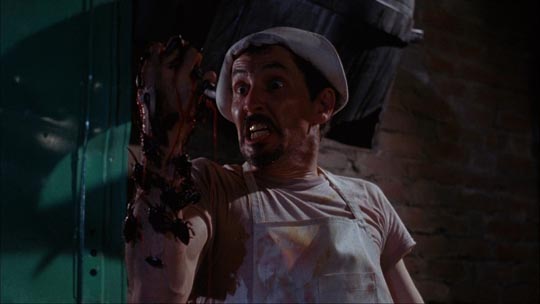
A couple of recent Shout! Factory releases exemplify the two extremes of low budget exploitation: William Sachs’ The Incredible Melting Man (1977) is an utterly incompetent mess notable only for some interesting makeup effects by Rick Baker and Greg Cannom. The story is essentially an update of Nigel Kneale’s The Quatermass Xperiment and Robert Day’s First Man Into Space; an astronaut exposed to intense solar radiation returns to Earth to become a liquifying monster which needs blood to hold itself together. The camerawork, editing and acting are bottom-of-the-barrel, but the melting man is well executed by the effects team. Terence H. Winkless’ The Nest (1988), on the other hand, is an effective slice of B-movie cheese, “Jaws with cockroaches” as one reviewer put it. A small island with a tourist-based economy is beset by genetically modified bugs which start stripping animals and then people to the bone; while the local lawman and his former girlfriend try to sort things out, the girlfriend’s father, the mayor, schemes with the corporation responsible to cover up the crisis so as not to hurt the tourist season. The most interesting character is the hot woman scientist who gets a serious erotic kick out of her mutant creations.
*
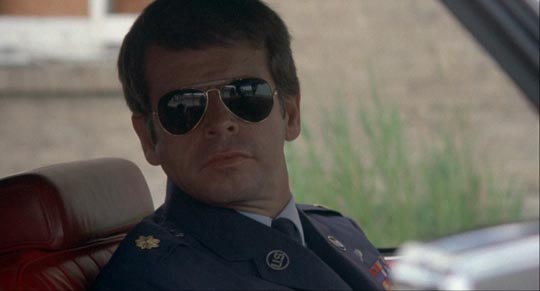
Rolling Thunder (1977): if nothing else, this revenge thriller illustrates just how good a filmmaker Martin Scorsese was back in the mid-’70s. With a story by Paul Schrader (who shares screenwriting credit with Heywood Gould), John Flynn’s movie never achieves the thematic complexity of Taxi Driver. Major Charles Rane (William Devane) returns to his hometown after years in a Vietnamese prison camp, honoured by the local population, betrayed by his wife, and psychologically damaged by his ordeal. When some petty thieves kill his family and leave him for dead, he survives with only one aim – to find and destroy the scum. He enlists the help of members of his old unit, particularly John Vohden (a young Tommy Lee Jones), eventually tracking the gang to Mexico for a bloody showdown which is a pale retread of Travis Bickle’s rescue of Iris at the end of Scorsese’s film. Despite some good performances, nothing about Rolling Thunder rises above the routine. (Also from Shout! Factory)
*
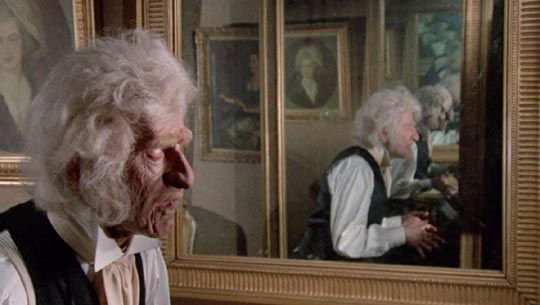
Shanks (1974): William Castle’s final movie is a real oddity. Subtitled “A Grim Fairy Tale”, Shanks plays like a Tim Burton movie made by someone entirely lacking in the skills needed to bring off such a fantasy. There are odd pre-echoes of Edward Scissorhands and Frankenweenie in this story of a deaf-mute puppeteer (Marcel Marceau) who lives with his greedy, shrewish sister-in-law and her drunken second husband. When he’s given a job by an ageing scientist, the pair see the money as theirs and treat him even more unpleasantly. The old man is working on a means of reanimating the dead with various electrical devices, starting with frogs. When he dies, the puppeteer uses the equipment to reanimate the scientist, controlling him like a puppet. Several inadvertent deaths add to his store of animated corpses and then for no particular reason, the old mansion is invaded by a biker gang and deadly mayhem ensues … all of which sounds more exciting than it plays as Castle’s staging is consistently clumsy and poorly paced, dragging down an already weak script. And yet there are a few undeniably effective moments when the human puppets do attain a kind of poetic beauty … just not enough to save the film from its overall dull clumsiness.
*

Ashanti (1979): Richard Fleischer was well into the final lacklustre period of his career when he made this international adventure story about modern-day slavery. Michael Caine is a U.N. doctor working in East Africa with his stunning black wife (Beverly Johnson) when she’s snatched by Arab slavers (led by Peter Ustinov in one of his oily performances). Caine has to track the kidnappers across North Africa to the Red Sea in an attempt to rescue her before she’s lost forever in the slave markets. Along the way he’s helped by Rex Harrison as an expert in human trafficking, William Holden as a bitter mercenary, and Kebir Bedi as a vengeance-driven Arab whose family was destroyed by the same slavers. The location shooting is picturesque, but Caine is an unsympathetic hero as he inexplicably abuses everyone who helps him. By the time of the action-finale rescue, it’s hard to care what happens and despite the “based on a true story” promise, the film has far less to say about slavery than Fleischer’s underrated Mandingo (1975). The Severin Blu-ray includes a fairly lengthy interview with a still-stunning Johnson recounting her experiences on the project.
*
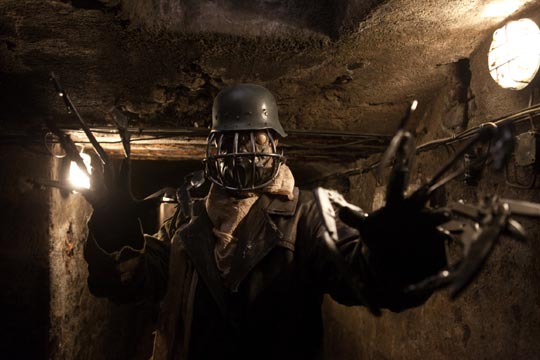
Frankenstein’s Army (2013): Richard Raaphorst’s WW2 horror movie goes way beyond the typical “Nazi zombie” story. A Russian reconnaissance unit moving west into Germany is diverted to a deserted village where they encounter increasingly strange signs of something unnatural … leading to the discovery of Frankenstein’s grandson transforming the dead into insanely imaginative cyborgs with a terrific steampunk look. The movie is gory, tense, and frequently very darkly funny.
Unfortunately, the “found-footage” conceit is an annoying distraction for several reasons: first, the very clean digital imagery looks nothing like 16mm film shot under harsh conditions, further compromised by the use of widescreen instead of Academy ratio. Then there’s the fact that all the Russians speak English, which wouldn’t be an issue if the movie wasn’t pretending to have that extra level of realism. And then there’s the fact that, unlike video, the old small 16mm cameras would only allow a few minutes of shooting before they needed reloading, so blowing off the amount of footage needed to cover extended action scenes destroys any semblance of plausibility. And so Raaphorst’s stated aim of achieving a level of immediacy by using the technique is actually undermined; the attempt to create realism merely calls attention to what’s being faked. But I only bring this up because everything else about the movie is so good; it all builds steadily to a level of sustained derangement seldom achieved by modestly-budgeted horror and fantasy movies these days, reminiscent of the kind of things Clive Barker imagines in his stories, but far superior to anything he ever achieved on screen.
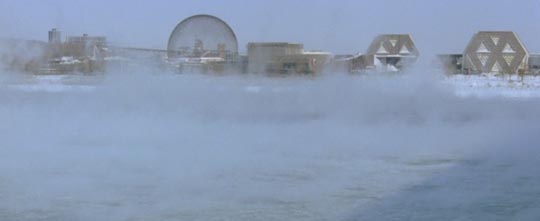
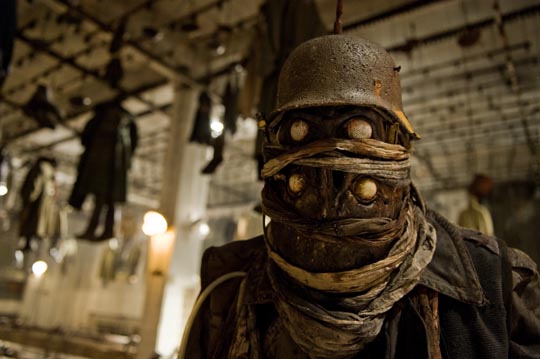
Comments